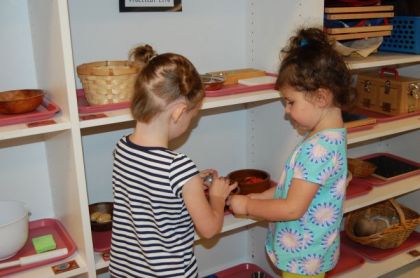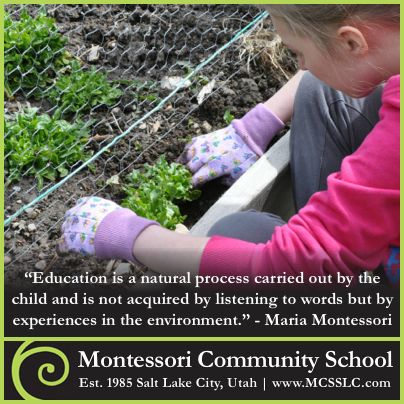Why is Grace and Courtesy a big deal in Montessori?
As you may already know from your communications with your child’s teachers, MCS classrooms begin the year with a heavy emphasis on our Grace and Courtesy curriculum. The article below, written by Edward Fidellow, will help you understand the benefits of a Grace and Courtesy curriculum and might offer some ideas how to reinforce the lessons at home!
Happy Reading!
Why is Grace and Courtesy a big deal in Montessori?
Edward Fidellow

You cannot observe a Montessori classroom for even a short time without coming away with an impression that Montessori children are by and large very polite, orderly and impressively quiet and serene. This atmosphere is created by the lessons of “grace and courtesy”. Grace and courtesy – good manners, caring about each other, putting others first – are solid virtues that make possible the extraordinary academic gains of a Montessori classroom. Grace and courtesy is one of the non-traditional academic foundations of a successful Montessori education. It is significant even beyond the academic accomplishments that your child will achieve in Montessori.
Many lessons in Montessori (and life) are learned obliquely or indirectly as a by product of other lessons. (For example, in Montessori all of the lessons of practical life are really preparations for reading and writing.)
While the exercises of grace and courtesy are tremendously valuable all by themselves they also lead to four significant outcomes.
While the Montessori environment is a classroom of individual learners, each progressing as quickly as they can, it is also a community of learners who help, encourage and teach each other. The courtesy of using an inside voice so as not to disturb their classmates; the courtesy of walking so as not to disrupt the learning going on is just the beginning of creating a unique learning environment. Sharing the learning materials, waiting your turn patiently, preferring and helping each other transforms the classroom into an oasis of peace where concentration and learning can happen. Valuing community is a significant outcome.
Second, grace and courtesy leads to the most significant lesson in life – how to love. Love is the ability (and the desire) to put someone else’s needs in front of yours – wanting the best for them. Whether it is holding a door, letting them go first, or doing what pleases them, love is a great lesson (most often demonstrated in small actions and ways.) Grace and courtesy is the doorway to love.
The third benefit of grace and courtesy is the building of self respect. Interestingly, when we are kind and courteous to others we like ourselves better. The young child cannot articulate all the conflicting emotions that are part of growing up but the structure of grace and courtesy helps them enjoy the feelings that come from a calm and orderly environment. They are much more at peace with themselves when they are at peace with their neighbor.
The fourth benefit is that grace and courtesy contributes to the development of self control. Grace and courtesy give children an external set of markers that they internalize and practice which in turn leads them to change their own behavior. This is the first step to controlling themselves. Self control will lead to focus; focus will lead to accomplishment; accomplishment will lead to success.
Not a bad byproduct for “Please” and “Thank you”.








